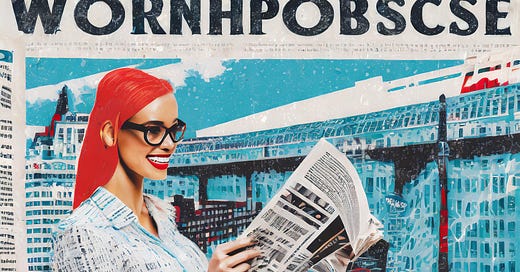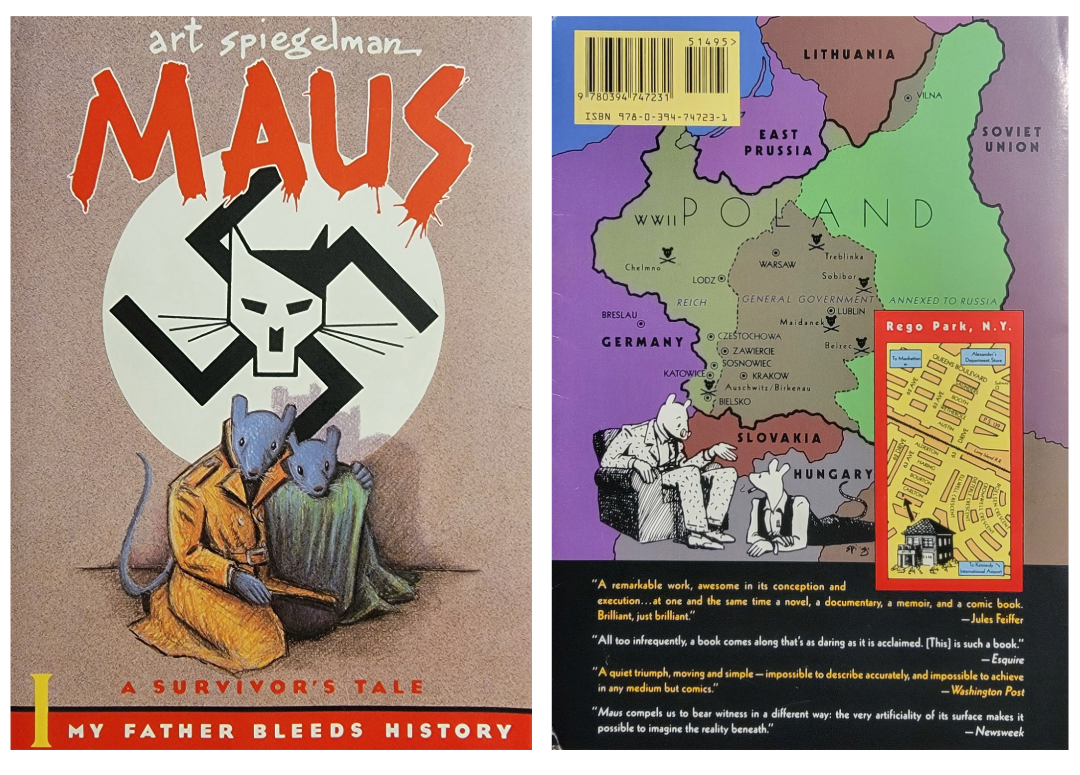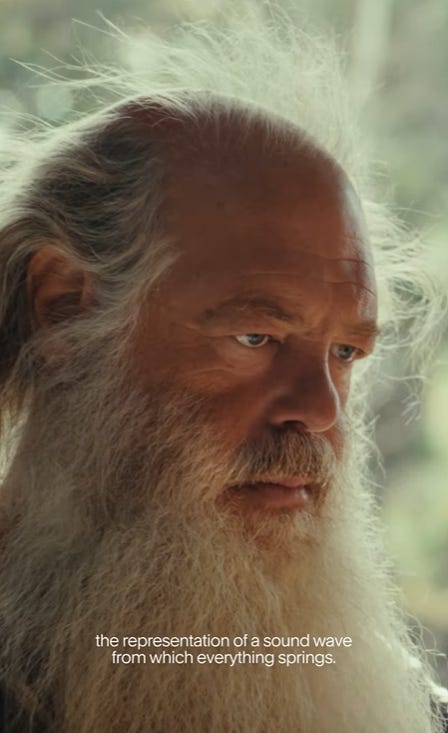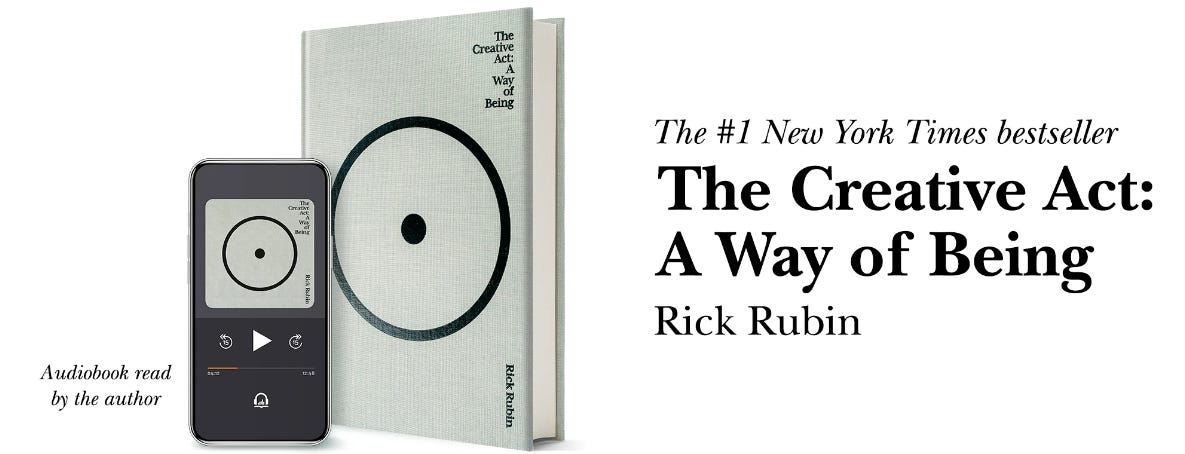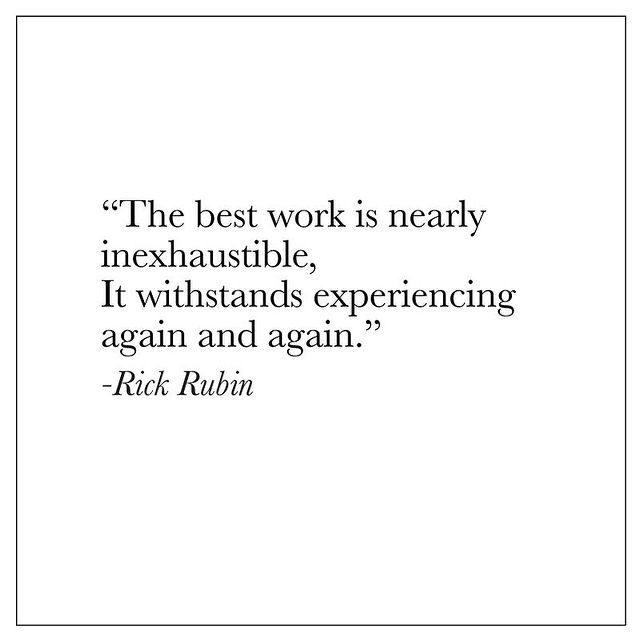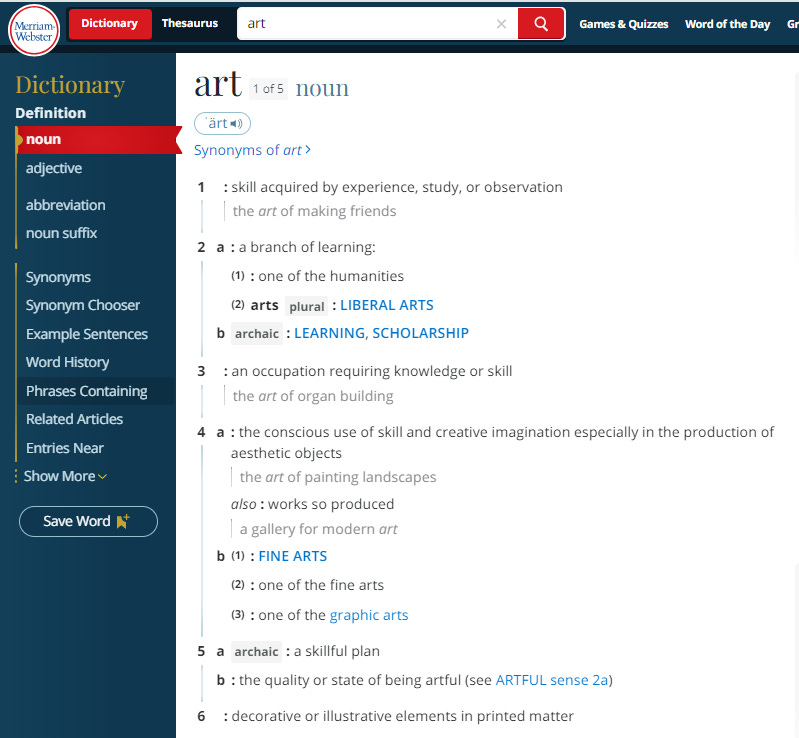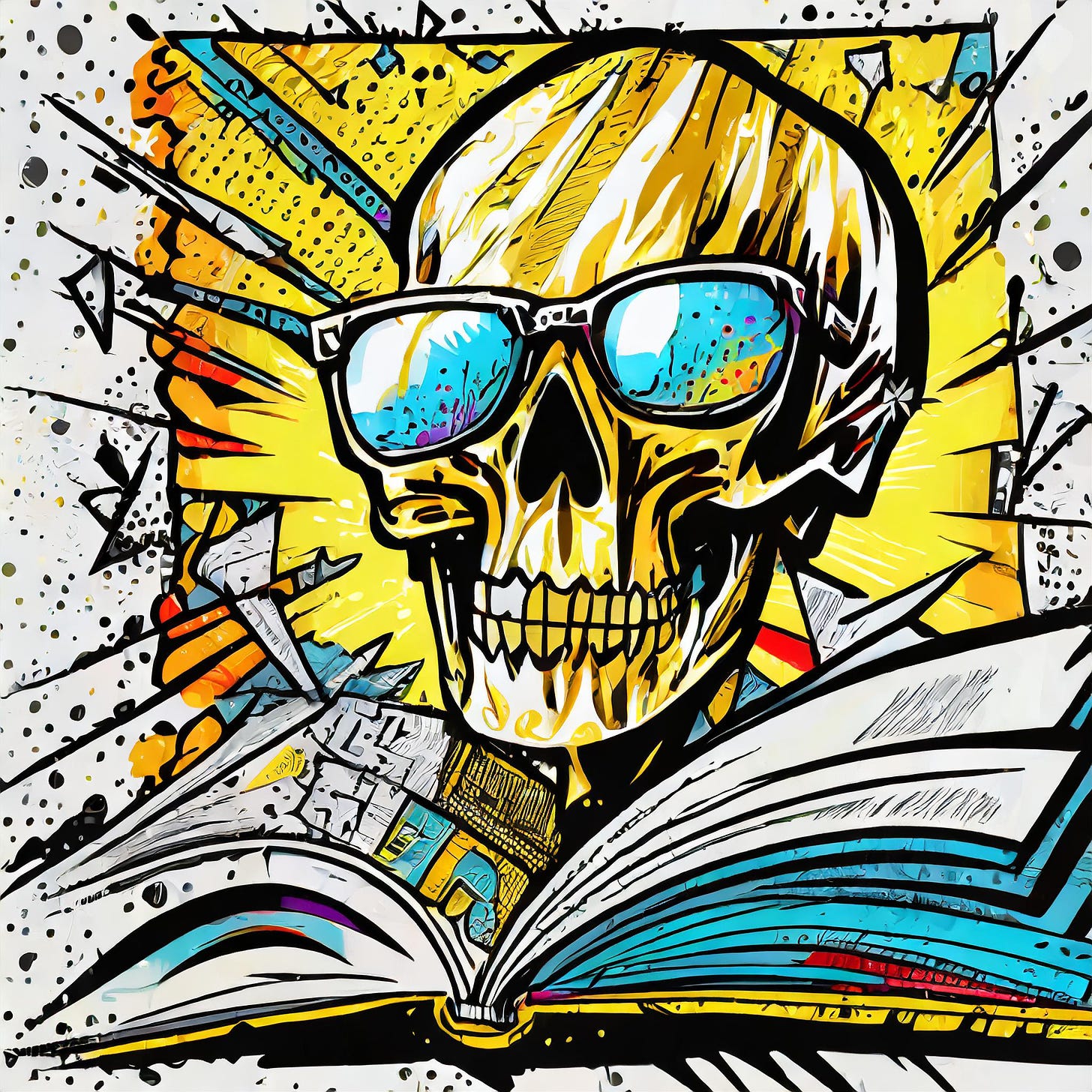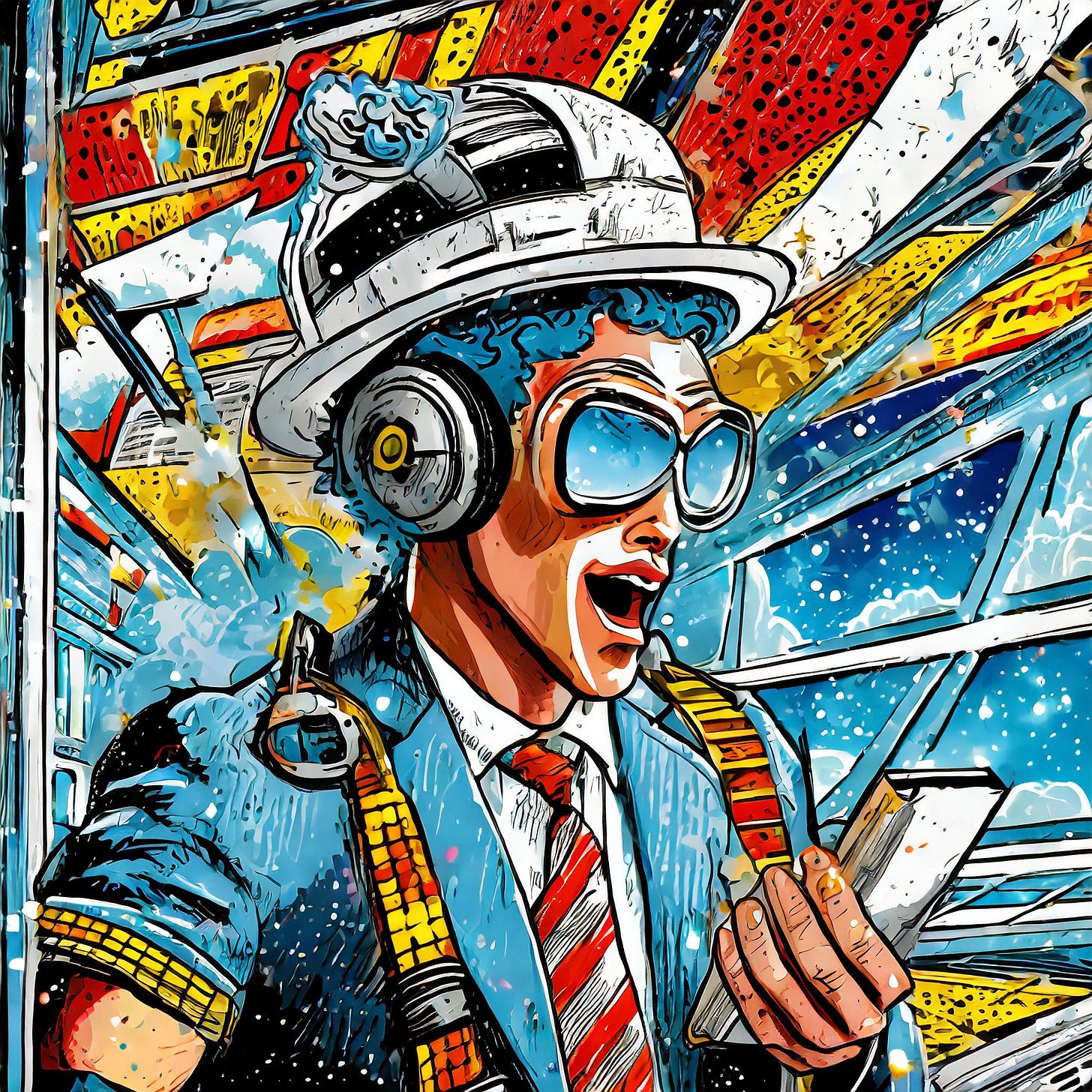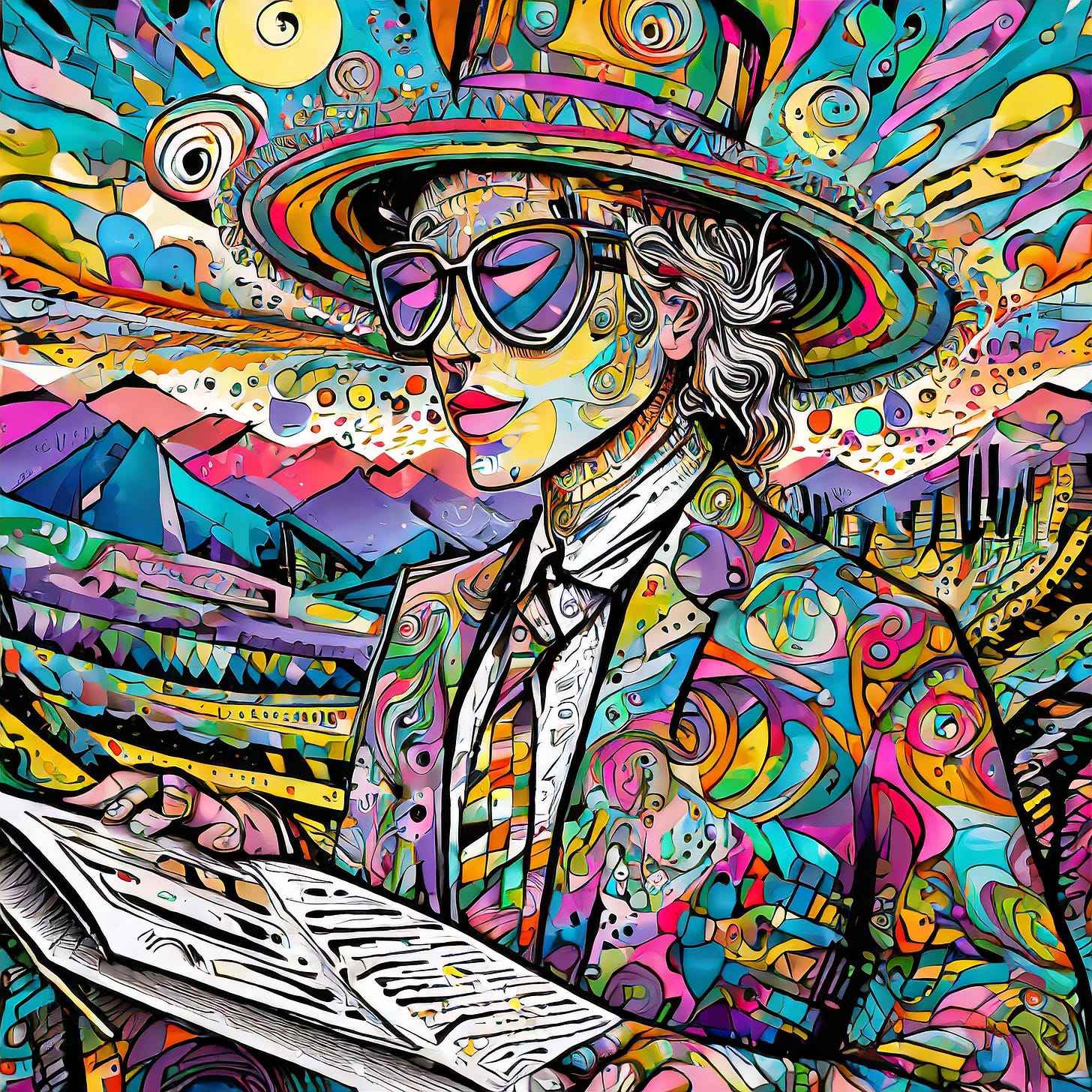Maus, Rick Rubin, & The Newsletter As The New Art
I aim to use these tools to explore the far reaches of this modern art form
Maus—A Triumphant & Daring Tale of Surviving “Hitler’s Europe”
A friend recently gifted me the graphic novel Maus I: A Survivor’s Tale: My Father Bleeds History by cartoonist Art Spiegelman.
Although I’m 38 years late to the game, great art is timeless. One could argue it becomes even more valuable with age.
It mesmerized me. After drinking it in through my eyes, and down into my heart, I rushed to order Maus II: A Survivor’s Tale: And Here My Troubles Began.
I needed to finish this story.
Maus I shares the story of Spiegelman’s parents, Polish Jews, in the most haunting and dark days leading up to their time in Auschwitz.
Maus II follows them through the hellish death camps all the way to their liberation, and, finally, to their reunion.
In 1992, Spiegelman was awarded a Pulitzer Prize under the category of Special Citation for Maus.
In the comic book format, Spiegelman portrays the Jews as mice and the Nazis as cats. As simple as that sounds, it is a visionary piece of work: part memoir, part graphic novel, and pure innovation.
The Wall Street Journal called it “the most affecting and successful narrative ever done about the Holocaust.”
Yet, in January of 2022, a Tennessee schoolboard of 10 individuals voted unanimously to ban the book from its eight-grade teaching curriculum.
The McMinn County Board of Education said in a public statement the reason Maus was removed was because “of its unnecessary use of profanity and nudity and its depiction of violence and suicide.”
As a result—and in line with P.T. Barnum’s famous statement: “There is no such thing as bad publicity”—the ban made international news and Maus sold out on Amazon.
But how did Spiegelman respond?
“Author Art Spiegelman says decision by McMinn County to bar book from eighth grades, citing ‘curse words’ and nudity, is ‘Orwellian,’” reads a byline from an article in The Times of Israel.
I suppose banning Orwell is Orwellian, too. In early 2023, Orwell’s 1984 was banned in Pennsylvania and Texas.
I also touched on book banning in last week’s WORDINGHOUSE.
According to McMinn County Board meeting minutes, one of its members, Tony Allman, said, “It shows people hanging, it shows them killing kids, why does the educational system promote this kind of stuff, it is not wise or healthy.”
The Times of Israel points out: “Of the roughly 6 million Jews murdered by the Nazis during the Holocaust, approximately 1.5 million were children.”
Although not pleasant, is it not healthy to teach kids the historic truth?
Understandably, we want to protect our children. But so many people were hung. So many kids did die. Perhaps teaching our children these dark parts of history is an act of protecting them.
When we say “Never Again,” we have to know what we are saying “No” to. We have to touch our children’s hearts in a way they will always remember.
This is the only way of preventing future generations from falling into the same trap as many of the everyday Germans did, who either were complicit, or actively supported the Nazis during the Holocaust.
In Maus we have possibly the most engaging, heart-wrenching tale of a family of Holocaust survivors in written (and hand drawn) form. The voice of Spiegelman’s father throughout the story is one-of-a-kind—unmatched in the way it invites the reader into the Jewish culture and the story of Jewish struggle.
The cartoon format allows a teenager to engage in ways a novel or history book would not. And through drawing, when Spiegelman depicts acts of violence, they are quite effective and moving, but not as grotesque, savage or graphic as a real life image would be.
Here’s why banning Maus was not the right choice and why I sincerely hope the school board removes this ban.
Eighth Graders are now teenagers—on their way to becoming young adults. They are mature enough to learn history, even it’s darker chapters. Because if not at this age, then at what age is appropriate?
Maus is packed with emotion, love, even moments of tenderness and lightheartedness—young kids can easily connect with the characters and remain interested through to the end.
The cartoon format is engaging in a special way. This is a study of history, literature and art, a Pulitzer Prize winning piece.
Even the hardest, most violent moments of Maus, are naturally softened by its comic book form.
Here is an interview with Art Spiegelman on the banning of Maus. Classic Spiegelman, he quickly and comfortably whips out his vape pen and starts puffing. Got to love him.
Rick Rubin—Whatever He Touches Turns to Gold
What is great about the renowned music producer, writer and podcast host, Rick Rubin is how simple he is in his approach to life, and how he creates.
And also how—barefoot, bearded and benevolent—with a childlike profundity, he helps others create.
He uncomplicates things for others, unties the knots that bind and block.
This is where I call all creatives, and anyone else who wants to improve their lives (yes, it’s that powerful), to watch Shangri-La, a four-part docuseries about Rick Rubin and his magical recording studio in Malibu, CA called Shangri-La.
As music lovers, while binge-watching this series, my family picked out a number of musicians, of multiple genres, we had never heard before and have since enjoyed exploring their sonic creations.
And this is where I implore everyone to pick up a copy of The Creative Act: A Way of Being. I have the audio edition, as Rick’s voice is so tranquil to hear, I wanted to soak in his sound waves.
As a teaser …
Here are 6 wisdom snippets from Rick, borrowed from The Creative Act: A Way of Being—
Creativity is a fundamental aspect of being human. It’s our birthright.
Talent is the ability to let ideas manifest themselves through you.
The imagination has no limits. The physical world does. The work exists in both.
We’re all different and we’re all imperfect, and the imperfections are what makes each of us and our work interesting.
Create an environment where you’re free to express what you’re afraid to express.
Sometimes the mistakes are what makes a work great. Humanity breathes in mistakes.
Also, here is Rick Rubin’s only post on his Instagram, so it must be important, right?!
The Newsletter, as the New Art Form—
Each week while writing WORDINGHOUSE, I realize there are new possibilities of how to express myself as a writer and artist.
The format of WORDINGHOUSE has followed a simple architecture: 3 sections, each about something different, often thematically connected. Typically pertaining to the arts, culture, creativity and sometimes touching upon human rights—remember, as Rick says, “Creativity is a fundamental aspect of being human. It’s our birthright.”
Then we finish with a Weekly Word, leaving you smarter.
But,
This is just the framework. What can be expressed within this framework: the possibilities are unlimited! Or at least only as limited as the state of my mind at any given time.
For example, this week, we will include our Weekly Word in this 3rd section:
What is ART?
This simple word, a noun, is so deep in meaning, Merriam-Webster gives us a 6 tiered definition:
While many of these definitions may apply to the newsletter form, put simply, Substack offers tools to the writer which allow for “the quality or state of being artful”.
These tools equip writers with the ability to incorporate imagery, video elements, links, embed social media, use block quotes, add subscribe and comment buttons, and also offer ways to share and connect with other Substack writers.
In a way, all of Substack is learning and evolving together.
From here on out, I aim to use these tools to explore the far reaches of this modern art form, to push artistic boundaries. To work hard as both a writer producing interesting and engaging content through language, and also as a newsletter artist that isn’t afraid to experiment and surprise.
I’m looking forward to seeing what you think as WORDINGHOUSE evolves in weeks to come. Beacuse we’re going to get wickedly wildly artful.
I was grateful to see last week’s post about Gao Zhisheng was shared by the Facebook Public Figure Profile for Gao. And from there, I was approached by a great poet and translator named Yiyan Han, who has already translated my poem “Hero” and will be submitting it to a online publisher of his choice for publication.
I will certainly share progress on his effort once it is published. You may read Yiyan Han’s other work here.
Thank you Yihan Han for connecting with me and becoming a new friend.
Update on 2 / 22 / 24
Super Exciting News:
The poem and its translation have been published as an article on The Epoch Times.
Also,
I’m so thankful to each and every one of you who continue to read and support WORDINGHOUSE.
Here are the Adobe Firefly AI images from the extras batch this week, most generated with a comic style as an ode to Mr. Art Spiegelman. Prompt: “This Newsletter is a Work of Art!” See how they really like sunglasses and business suits? Apparently artists who write newsletters have sensitive eyes and a refined fashion sense.


